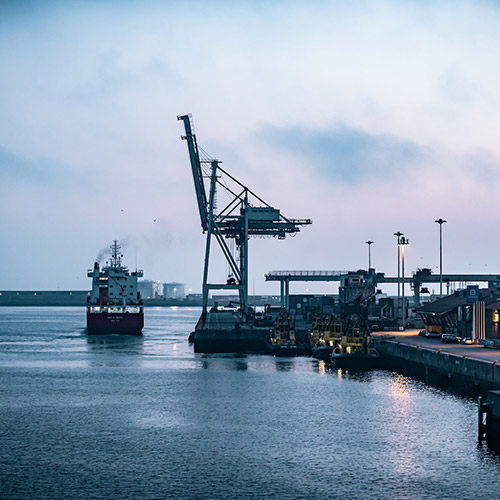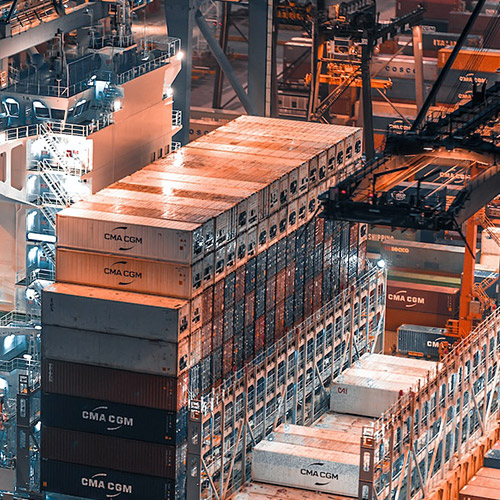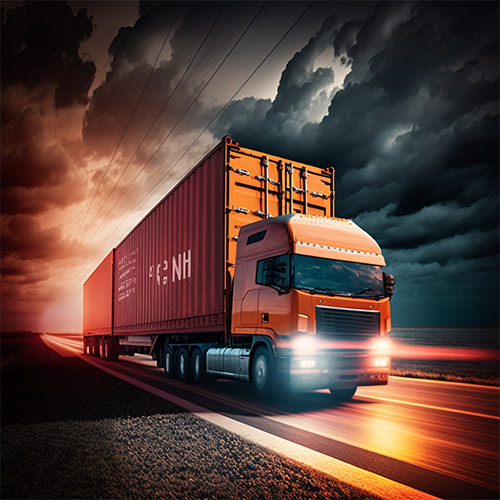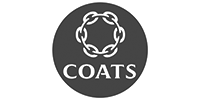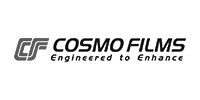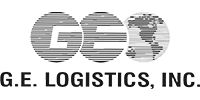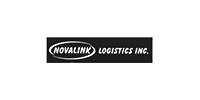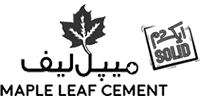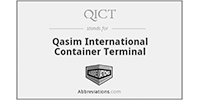Future of Freight: Quick Commerce – Next Generation E-Commerce
Quick Commerce stands for convenient online ordering and fast delivery within one hour after receipt of order. More and more industries are evaluating whether and how quick commerce can help them to meet rising customer expectations. Read on to find out who is benefiting from quick commerce and what the logistical challenges are.
INFOBOX
The Essentials in Brief
It is not quick commerce vs. e-commerce, it is quick commerce being the turbo of e-commerce. The latter has accelerated traditional mail order into the 21st century, and quick commerce is taking it even further.
What is quick commerce all about?
• Fast delivery (ideally in less than an hour)
• Delivery from decentralized micro-fulfillment centers (so-called dark stores)
• Limited range of products (focus on fast-moving consumer goods)
• Delivery vehicles adapted for use in urban areas (e.g., two-wheelers, small transporters, mini delivery vans)
Significance of Quick Commerce in Logistics
Quick commerce applies to the B2C sector and, in particular, to the last link in the logistics value chain: the last mile. Quick commerce requires the development of dark store networks tailored to the needs of the respective sector. The vehicle fleet must also be adjusted to the requirements of fast delivery in urban areas. Last but not least, the individual process steps must be precisely interlinked to make fast delivery possible. Thus, high-quality process management is the essential prerequisite for quick commerce.
Quick Commerce in Summary
Quick commerce can be described as next generation e-commerce with exceptionally fast delivery of products. As with e-commerce, the purchase process is entirely online. The products are delivered within one or a few hours after the order is placed. This is only possible over short delivery distances and is usually only economically viable in urban areas. Quick commerce requires a network of decentralized warehouses stocking a limited range of preferably fast-moving consumer goods.
Quick Commerce: Examples from the Present, Prospects for the Future
As a complement to brick-and-mortar retail in urban areas, the introduction of quick commerce dates back to before the COVID-19 pandemic. At that time, the aim of retailers was to extend their core business with fast door-to-door delivery of everyday items such as groceries or drugstore products. Nevertheless, the subsequent rise of quick commerce is closely linked to the pandemic.
COVID-19 Pandemic as Catalyst for Quick Commerce
Quick commerce took off only with the lockdowns, which led to an explosion of online orders. Since then, the market for quick commerce solutions in urban areas has grown rapidly. This trend is likely to continue on a global scale. Quick commerce for grocery delivery is now available in most urban areas around the world, partly through established retailers and partly through specialized quick commerce providers.
Not Every Industry Is Suitable for Quick Commerce
Quick Commerce is not applicable to every business model or product segment. For example, it largely excludes the B2B sector and rural areas, where the quick commerce concept is simply not profitable: the low population density and correspondingly low demand, on the one hand, and the necessary dark store infrastructure, on the other, are not compatible from an economic perspective.
In addition, the weight and size of products are limiting factors for quick commerce. Large products such as furniture or flat-screen displays require more storage space than is available in typical dark stores, and transport involves larger vehicles. Moreover, there is the question of whether the cost of permanent storage for products that are not in constant high demand is in a healthy ratio to sales.
For this reason, sectors that are primarily concerned with rapid availability could benefit from quick trading in the future. Besides the grocery and drugstore sectors, this could also apply to the supply of pharmaceuticals, for example.
Chances and Challenges of Quick Commerce
In the age of e-commerce, customer loyalty can be driven not only by high-quality products, but also by a positive delivery experience. A hassle-free online shopping experience within one hour from order to delivery helps companies to attract and retain new customers.
However, the transition to quick commerce comes with risks that should not be underestimated. The changeover is costly in terms of fleet, personnel, and infrastructure. Furthermore, the required goods must be constantly available in the right quantities. Finally, delivery standards must be maintained at all times: if a company promises to meet customer expectations for smooth delivery in the shortest possible time, it can be at a competitive disadvantage and lose relevance if it fails to deliver even once.


Warehouse Logistics
Warehouses have been around as long as people have been trading and moving goods. Warehouse logistics is a millennia-old task that has undergone changes in the industrial age with forklifts, industrial pallets, and high-bay warehouses. But that’s nothing compared to how digitization, artificial intelligence (AI), and robotics are revolutionizing warehouse logistics today. Find out what modern warehouse logistics is all about.
What Is Warehouse Logistics?
There are different warehouse types for specific storage needs. The type of warehouse is determined by its function in the supply chain. However, the logistics processes themselves in the different warehouses are similar. There is no fundamental difference between the stocking of production goods in a production warehouse and preparing shipments for final delivery in a transit warehouse: the basic tasks and processes are the same and can be defined consistently.
Warehouse logistics is the professional and systematic management of all the processes involved in handling goods in a warehouse. This includes all logistics processes from incoming to outgoing goods. Both inbound logistics and outbound logistics are interfaces to transportation logistics.
Warehouse Logistics Optimization: Tasks and Challenges
Warehouse Planning
Efficient warehousing demands good planning. That is why thorough requirement planning is the first step in warehouse logistics. This planning must address both qualitative and quantitative aspects: What will be stored and what are the specific requirements of the goods? And: How much will be stored and what is the expected inventory turnover rate?
The answers to these questions must be long-term in scope, accounting for potential business growth or demand forecasts. The requirement analysis determines the location and type of warehouse, the size of the warehouse, the staffing requirements, and the technical equipment needed.
Physical Tasks
Physical tasks refer to the movement of goods within the warehouse between goods receipt and goods issue: for example, putaway and (if necessary) relocation, order picking, or distribution.
Warehouse Management
Inventory management, including inventory control, is the central task of warehouse logistics. An important aspect is inventory accuracy: the actual inventory must match the one in the inventory management system to avoid additional costs and accounting problems, and to keep process quality high. Risk management, quality management, and human resource management are also part of warehouse management.
Warehouse Monitoring
To ensure the quality of warehouse processes, they must be monitored continuously. Key Performance Indicators (KPIs) specific to warehouse logistics (warehouse KPIs) are an important controlling tool.
Who Can Benefit from an Effective Warehouse Logistics Process?
Every company manufacturing or trading goods depends on warehouse logistics. Precise logistical processes require complex control and an adequate warehouse logistics infrastructure: in terms of space, technology, and personnel. In e-commerce, there are many smaller players that may be reluctant to take on the risk of running their own warehouse logistics or simply do not have the resources to set up internal logistics solutions. But regardless of size, the question posed by many companies is: Does it make sense to set up internal warehouse logistics?
Warehouse logistics service providers may handle all or part of the warehouse logistics tasks, depending on how many of the warehousing processes a company decides to outsource. The most comprehensive type of outsourcing is fulfillment. In this case, a service partner takes over all warehouse logistics tasks, from goods movement to inventory control, as well as other operations such as order taking, packaging, shipping, and returns management.
Especially smaller online retailers tend to rely on fulfillment services. In e-commerce, this is referred to as e-fulfillment, which is usually technically implemented via IT interfaces between online stores and warehouse logistics systems.
Automated Warehouse Logistics for Industry 4.0
In discussing e-commerce logistics, a key aspect of the present and future of logistics has already been addressed: the digitization of warehouse logistics. Digitization is not a trend; it is a reality.
As the world becomes more interconnected, the global flow of goods continues to grow. E-commerce logistics often means large shipment volumes in small units. This all adds up to a huge logistical effort that can no longer be managed without efficient IT warehouse management systems, networking between warehouse and transport logistics, as well as state-of-the-art warehouse technology. In addition, there is a shortage of personnel in warehouse logistics, which is likely to become even more acute in the future.
In short: automation and digitization are essential for the future viability of warehouse logistics.
Robotics in Warehouses
Robots, e.g. in the form of robotic arms, have been part of industrial manufacturing for more than 60 years. Recent developments in AI and the Internet of Things (IoT) have made robots more versatile and expanded their use in warehouse logistics. For example, automatic learning enables them to navigate better and better and to communicate with shelves and shipping boxes via IoT. All this increases their autonomy.
Initially, warehousing robots usually were just stationary robot grippers or storage and retrieval machines (SRM) that moved along fixed tracks on warehouse shelves and picked goods. Currently, the variety of warehouse robots and sophisticated automated storage and retrieval systems (ASRS) has expanded considerably:
• Assisted picking robots working alongside humans
• Autonomously operating pick and place robots
• Sorting robots
• Packaging robots
• Driverless transportation vehicles, such as autonomous forklifts and pallet trucks
• Autonomous drones
Fully autonomous, robot-supported warehouses with automated transport and storage systems are the final stage of this evolution – already today.
Warehouse Logistics Optimization Requires Automation
The challenges facing warehouse logistics are enormous. Rising labor costs combined with labor shortages cannot be overcome without automation. Moreover, competition for skilled workers is intense. A modern warehouse offers attractive jobs for ambitious employees and thus a competitive advantage.
On the other hand, customers expect fast and effective fulfillment. Here, too, advanced warehouse systems provide support. Robots work around the clock, allowing for more processes per day. Automation not only speeds up processes, it also makes it possible to use warehouse space more efficiently thanks to seamless processes. This saves space and reduces rental costs.
Last but not least, there is the overarching goal of sustainability. Efficient processes save resources. A process-optimized warehouse, like DHL Freight’s Terminal for the Future, makes a significant contribution to achieving sustainability goals.
International managers feel the same way, as a recent survey of more than 300 international managers by Norwegian warehouse technology provider AutoStore indicates:
• 20% consider labor costs for warehouse logistics to be the biggest challenge.
• 61% have significantly or completely automated their warehouse logistics.
• 91% regard the use of space as a business priority.
• Increasing energy efficiency is the top sustainability goal for 37% of respondents. 30% want to reduce their warehouse‘s carbon footprint.
Importance Of Pharma Logistics
What is Pharma Logistics? Pharma logistics is the management of medicines which involves the systematic utilization and management of these safe and effective transportation and intermediate storage processes to reach out to the customers from point of origin. This is part of the set of measures to give medicine, vaccine, partioning and other health care product transportation, storage and distribution conditions under strict temperature and quality controls. That is what is expected to be carried out. Medication supply chain is a sophisticated one that consists of the multitude of players that are of the manufacturers of the drug, wholesalers, distributors, pharmacies, and hospitals. All of them have in their hands the same level of importance as one of their concern may lead to the material going through the change in time, temperature, or wrong handling which would be a hazard to the product quality, and consequently to the patient's health.
Challenges in Pharma Logistics One of the most critical areas in the logistics industry and in fact the number one is certainly the pharma manufacturing and some of these issues are the severe regulations and the critical role of expert supervision Temperature control: A significant number of medications particularly shots as well as vaccines call for an inflexible temperature control even along the entire supply chain. When talking about these products, we must emphasize on the temperature condition as it is critical for the shelf life of the products offered. Regulatory Compliance: The pharma industry is dominated by its regulations. Logistics providers must follow different rules such as Good Distribution Practices (GDP) to ensure that the various pharmaceuticals are being correctly transported and are compliant to the safety standards. Product Security: Pharmaceuticals are high-value products, making them a target for theft. To protect these products, security in the supply chain is of utmost importance. Supply Chain Visibility: Easy-to-see the state of the supply chain through the actual time even today is essential for following the shipping, identifying dangers, and guaranteeing fast delivery. Specialized Handling: There are some pharmaceutical products which cannot be handled in the same manner as others. The kind of special handling required may be including dangerous materials or curbed substances which makes the logistics process harder.
Utrade Logistics: Your Trusted Partner in Pharma Logistics We offer Utrade Logistics a variety of pharma logistics solutions that can be used to meet the unique requirements of the pharmaceutical industry. The larger part of the services we offer such as the following: Temperature-Controlled Transportation: We give you our fleet of controlled-temperature vehicles with high technology first-rate monitors to keep your products intact during transportation. We are specialists in vaccine refrigeration or the storage of other medications at ambient temperatures, whatever your logistics needs are, they are our area of expertize. Regulatory Compliance: Our team is made up of experts in the regulatory details of the pharmaceutical industry. Every logisticndatory guideline is exactly followed, we guarantee that your products are handled in accordance with all the regulations. Security Solutions: We subsystem our security procedures with GPS tracking and tampering eavesdrop -seal in addition to our warehouses, in which you are assured that your data are stolen and invasion. Supply Chain Visibility: We are running some programs and rail monitoring devices-, that help you see the whereabouts of your shipment in real-time. This invention allows you to trace the streams in real-time of your warehousing products to the point till the warehouse has delivered them. Specialized Handling: We farm out only our staff that has the proper skills to deal with(at most, say 10) specific(depending on the product) hazardous(pharma etc.) substances and transport them safely and securely.
At Utrade Logistics, We try to keep up with and above the above trends through technology investment, network expansion, and constant service improvement. Our goal is to provide our clients with innovative, reliable, and efficient logistics solutions that meet the ever-changing needs of the pharmaceutical industry.


How to Choose the Right Logistics Partner for Your Business
The circular economy increases the importance of reverse logistics, i.e. the organization of goods and information flows in the opposite direction of the primary supply chain. By strengthening reverse activities, the linear supply chain becomes a supply cycle whose main purpose is value retention and recycling. What is lost in revenue from linear chains between new production and the end consumer is compensated by the reverse, refurbishment, or resale market. Simple returns logistics and return managements must be enhanced by integrating elements such as repair, recycling, and resale into the circular supply chain. Logistics service providers like Utrade Logistics can take on many new roles in the circular economy and present themselves to their partners as solution providers for repair, refurbishment, or recycling processes. The circular economy calls for an expanded network of partnerships that logistics players must adapt to.
Everyone Is Challenged – But Logistics Remains the Backbone: The successful transition to a circular economy is a shared responsibility and a joint effort of all stakeholders: producers, service providers, consumers, and policymakers alike. However, logistics is the natural backbone of the circular economy. The circular economy changes the way materials and products are moved – from a straight line to a regenerative cycle. Efficiently managing the flow of goods is what logistics is all about. At Utrade Logistics, we look forward to partnering with circular economy stakeholders by paving the way for the new physical and data flows within the supply cycle.
Evaluate Experience and Expertise: Look for a logistics partner with extensive experience and expertise in your industry. An experienced partner like Utrade Logistics Pharma Services will have a deep understanding of the challenges and requirements specific to your business. Check their track record and ask for references to gauge their reliability and performance.
Assess Technology and Capabilities: In today's fast-paced market, technology plays a critical role in logistics. Ensure that your potential logistics partner, such as Utrade Logistics, uses advanced technology for tracking, inventory management, and communication. Real-time tracking, automated reporting, and robust IT systems are essential for efficient and transparent operations. Learn more about how we leverage technology in our LTL and FTL delivery services.
Consider Scalability and Flexibility: Choose a logistics partner that can scale their services to accommodate your business's growth. Companies like Utrade Logistics offer flexible solutions that adapt to changing market conditions and customer demands. Whether you need LTL or FTL delivery, Utrade Logistics can support your business through different phases of growth and challenges.
Evaluate Customer Service: Excellent customer service is a key indicator of a reliable logistics partner. At Utrade Logistics, we prioritize customer service, ensuring responsiveness, strong communication skills, and a willingness to go the extra mile to resolve any issues. A partner that values customer service helps you maintain strong relationships with your clients and ensures smooth operations.
Review Cost and Value: While cost is an important factor, it should not be the sole criterion for choosing a logistics partner. Consider the overall value a company like Utrade Logistics brings to your business, including service quality, reliability, and added benefits such as expertise and technology. A cost-effective partner that delivers value can significantly impact your bottom line.
In conclusion, choosing the right logistics partner requires careful evaluation of their experience, capabilities, technology, customer service, and overall value. By partnering with Utrade Logistics, you gain access to industry-leading expertise, technology-driven solutions, and a reliable partner that aligns with your business goals. Whether it’s pharmaceutical logistics or comprehensive delivery services like LTL/FTL delivery, we offer flexible and scalable solutions to help your business thrive.

